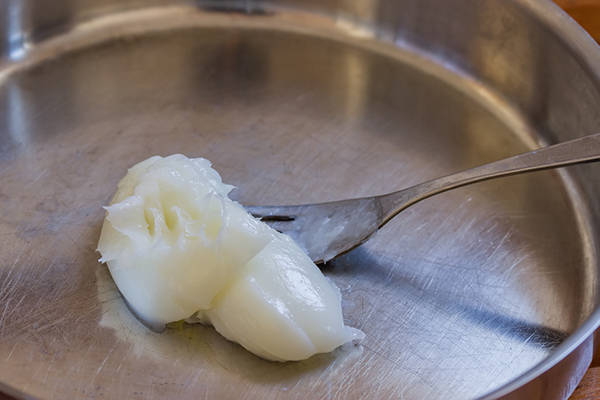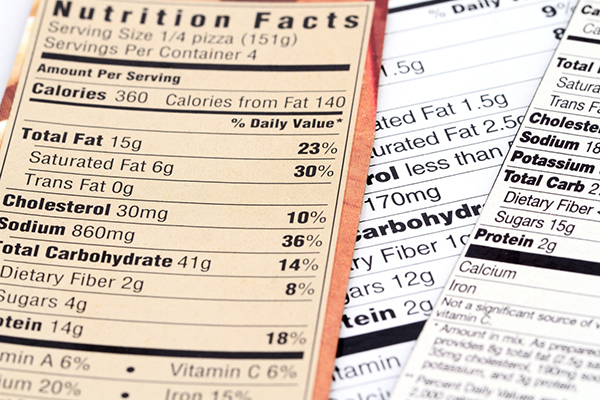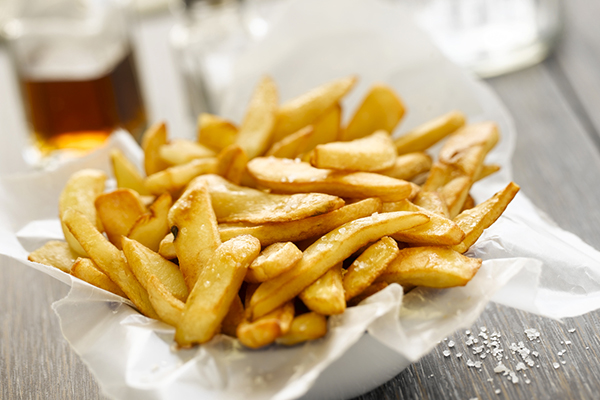What Are Trans Fats and Why Are They So Bad?

While most aspects of nutrition are up for debate, the experts agree on this one: Trans fats are harmful to our health.
Once regarded a miracle fat capable of extending the shelf lives of thousands of foods, trans fat eventually became lipid enemy No. 1, guilty of widespread obesity and heart disease.
So, how did trans fats become so central to the American diet, and where are they now? Here’s what you need to know about trans fat and any foods that may still contain it.
What Is Trans Fat?

Trans fat is unsaturated fat that has been chemically altered to behave more like a saturated fat. This makes it
- More solid at room temperature
- Less vulnerable to spoilage
The process by which trans fats are altered lends them a “trans” chemical structure, which is basically a reconfiguration of their molecules.
Trans fat vs saturated fat vs. unsaturated fat
Whether a fat is saturated, unsaturated, or a trans fat depends on its molecular composition. A fat’s chemical makeup can affect its physical and culinary characteristics.
Saturated fats have no double bonds which makes them stable molecules and, therefore, more solid at room temperature. Unsaturated fats have one or more double bonds, which make them more liquid at room temperature and less stable, i.e. susceptible to faster oxidation (rancidity).
“That’s why you can open a bottle of sesame oil that’s been in the cupboard for too long and immediately notice that it smells ‘off,'” says Fay Israsena, a nutritionist based in the U.K. “The fat has oxidized due to exposure to air, light, and heat.”
Enter: trans fats, a veritable hybrid of saturated and unsaturated fat which was largely the invention of food manufacturers.
Trans fat history
Since the early 1900s, limiting animal fats and including more vegetable fats has been promoted to support heart health and healthy cholesterol levels. But vegetable oils spoil faster, so manufacturers developed a method of altering a fat’s chemical structure to solidify it and extend its shelf life.
Vegetable shortenings were the result of the chemical process of hydrogenation. By the 1960s, hydrogenated vegetable oil was widespread in use by food manufacturers, fast-food restaurants, and even home cooks.
This new, chemically altered oil not only had beneficial cooking properties (e.g., flakier pie crusts), but it also solved a major problem in the food industry. Baked and fried goods now had a longer shelf life.
Plus, it was cheap — but everything has a price.
Why Are Trans Fats Bad for You?

Trans fats have a twofold negative effect on cholesterol, according to James Marin, R.D., a dietitian based in Los Angeles, California.
First, trans fat can increase levels of LDL (low-density lipoprotein), or “bad,” cholesterol, which raises the risk of cardiovascular disease. Second, trans fat can also lower the “good” HDL (high-density lipoprotein) cholesterol, whose function is to mop up excess fat lingering in the blood.
As a result, removing trans fats from your diet is generally advised to promote heart health.
By the 1990s, the World Health Organization started warning the public to reduce its intake of trans fats, and, in 2006, the New York City Health Department banned the use of trans fats in restaurants.
The US Food and Drug Administration (FDA) followed suit in 2015, ruling that partially hydrogenated oils (PHOs), which were the primary source of artificial trans fats in processed foods, were no longer considered safe for use in human food.
“Food manufacturers were ultimately given until 2021 to comply with the ruling outlawing the use of partially hydrogenated oils in all food prepared in the US, unless otherwise approved by the FDA,” says Krista Maguire, R.D. “In 2023, the agency issued its direct final rule to complete all administrative actions in this regard, which means that trans fats should be out of use by food manufacturers.”
So why do you still hear about these unhealthy fats — and should you still be on the lookout for them?
Do Foods Still Contain Trans Fat?
While partially hydrogenated oil was formally banned in 2015 and scrubbed from the US food supply in 2021, trace amounts of trans fat may still be present even in foods with nutrition labels that claim to be free of it. That’s because trans fat is found naturally in some meat and milk products.
Is natural trans fat a safer form than the chemically modified variety? Maybe, but maybe not.
“Most of the research suggests that natural sources of trans fat may not hurt your health if consumed in small amounts,” Maguire says. “But if these foods are consumed in large amounts, there may be negative cardiovascular effects similar to those from the man-made partially hydrogenated oils previously found in packaged and processed foods.”
What Has Replaced Trans Fat Since the Ban?

“The ban on trans fat may no longer make it a compelling reason to avoid ultra-processed, packaged and fast foods,” Israsena says, “but its replacement with refined vegetable oils rich in polyunsaturated fats (PUFAs) still makes these foods problematic.” Not to mention their lack of nutrients and fiber, high sugar content, and use of preservatives.
Ready to clear your diet? Check out which fats are healthy to eat and be sure to scrutinize the labels of the following foods that can be high in PUFAs:
- Breads, biscuits, crackers, and chips
- Fried foods like chicken and fries
- Microwavable popcorn and meals
- Frozen pie and pizza crusts
- Margarine (click here for swaps!)
- Packaged baked goods (pastries, doughnuts, cakes, cookies, etc.)
- Nut butters (especially those labeled “no-stir” or “nut spread”)
- Coffee creamer
- Meat sticks and jerkys
- Packaged pancake/baking mixes and frosting
The Takeaway
Thankfully, trans fat is mostly a thing of the past now, and there’s an easy way to avoid sneaky, refined, PUFA-rich vegetable oils.
“It’s quite simple: Eat mostly whole, unprocessed plant-based foods,” Maguire says. Avoid eating junk food, fast food, and ultra-processed/nutrient-depleted foods, and cut out or minimize industrial animal products.
“Ditch most packaged foods, and opt for fruits, veggies, nuts, seeds, beans, and lean protein,” Maguire recommends.
By choosing a diet rich in foods found in their most natural form like those emphasized in BODi’s Portion Fix and 2B Mindset eating plans, you’ll avoid harmful fats and maximize nutrient density and diversity.
